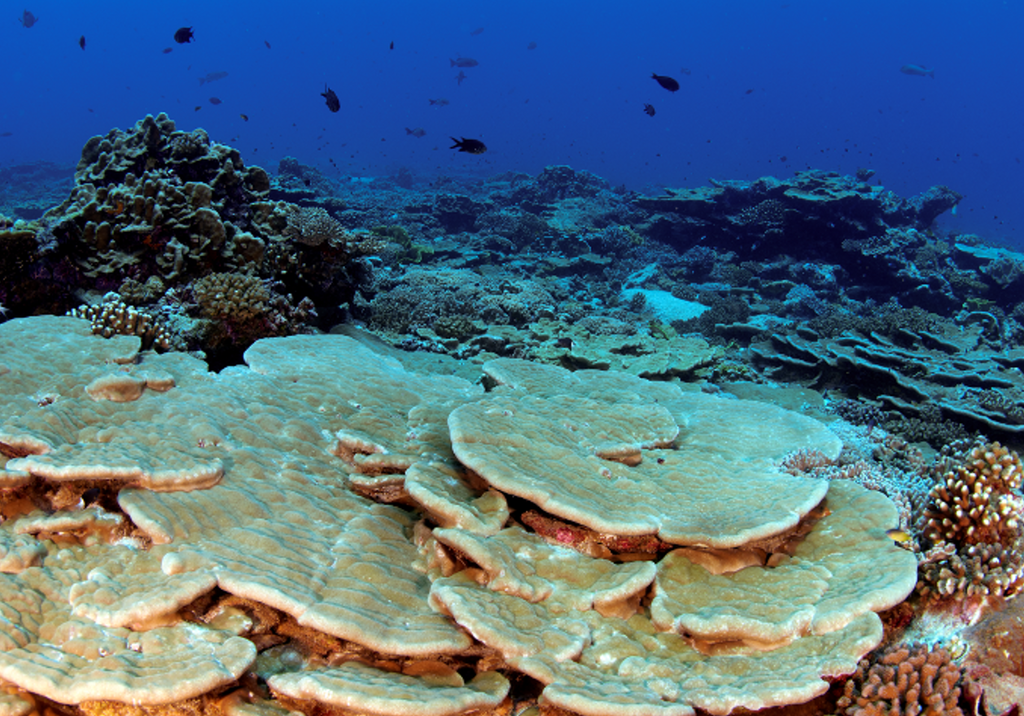Williams et al. (2013), CC BY 3.0, via Wikimedia Commons
Shallow coral reefs invoke serene scenes of flitting fish against a backdrop of a continuously morphing natural architecture. But deep reefs, found at depths of 30–150 metres and just out of reach of scuba divers, provide a tantalising peek at a bustling metropolis of animal biodiversity. They are also perhaps more imperilled than their shallow, tropical sea reef counterparts.
The latest research led by the Department of Biology, University of Oxford, underlines this grave situation.
It derived recommendations from stakeholders for improving existing deep reef conservation strategies in areas focusing on information collection and resource pooling, painting a clear direction for future research-led protection.
The research is timely. The gathering of representatives from 188 governments over the 12-day UN Biodiversity Conference (COP15) in Montreal, Canada, was greeted with an international outcry to protect deep reef ecosystems.
By 19 December, delegates succeeded in passing the ‘30 by 30’ resolution to achieve 30 percent protection of the world’s lands and seas by 2030 as part of an encouraging 10-year global sustainability plan.
The open-access journal Conservation Letters recently published the research by Nekton, a project led by Oxford scientists focused on charting deep-sea marine ecosystems, and the Western Indian Ocean (WIO). This demonstrated that a mere 4.3 percent of the WIO fell under marine protected areas (MPAs).
MPAs curtail extraction and fishing activities in the area and “have been shown to conserve biodiversity and promote sustainable fisheries,” says the article, “while evidence is accumulating that they can enhance adaptation and resilience to the effects of climate change.”
Despite harbouring a quarter of aquatic fauna when combined with tropical reefs, cold-water deep reef ecosystems remain under-protected and poorly understood compared to their shallower reef counterparts.
“Deep reefs are critical to a healthy marine ecosystem and face similar threats from overfishing, pollution, and climate change faced by the much-imperilled shallow reef system”, said Dr Paris Stefanoudis, the paper’s lead author, describing Nekton’s conservation mission.

Reprinted from “Stakeholder-derived recommendations and actions to support deep-reef conservation in the Western Indian Ocean,” by Stefanoudis, P. V. et al., 2022. This work is licensed under a Creative Commons Attribution License 4.0.
Aside from their roles in ocean health, including food security and refuge for inhabiting animals, deep reefs offer scientists a living database of Earth’s ancient climate that aid future climate predictions. And yet, conservation schemes have long been neglecting them.
One reason behind this neglect is the poverty of information and poor access to these exotic ecosystems, pushing them off the radar.
The researchers explored gaps in existing deep reef conservation methods, deploying a pipeline of online surveying of reports on 45 WIO MPAs to semi-structured interviews to suggest recommendations in policy areas for improved reef protection.
The authors marked three policy areas for tackling reef conservation—capacity, information collection, and sharing.
Shared pools of resources and tools, as applied successfully by the Acoustic Tracking Array, South Africa, is one possible approach. This would increase the capacity of current conservation efforts, offering greater access to reef ecosystems and information that are currently limited by technology deficits in countries most suited to carry out conservation.
The study thus proposed creation of local expertise and standardised methods for marine surveying that allow for the collation of findings across the WIO.
In addition, ensuring public outreach and information sharing through symposia and revised educational materials on survey methods and taxonomy to raise awareness of coral ecosystems.
Not only will better conservation of the WIO restore the decline in regional marine biodiversity, it may also protect the 100 million people dependent on artisanal fishing along its 100km coastline.
Reefs have a mesmerising power over us. The transfiguring meshwork of colour, shape and exotic lifeforms are a sobering reminder of Earth’s biodiversity. Protecting these unique ecosystems addresses their role in supporting other marine species and the communities dependent on them.





